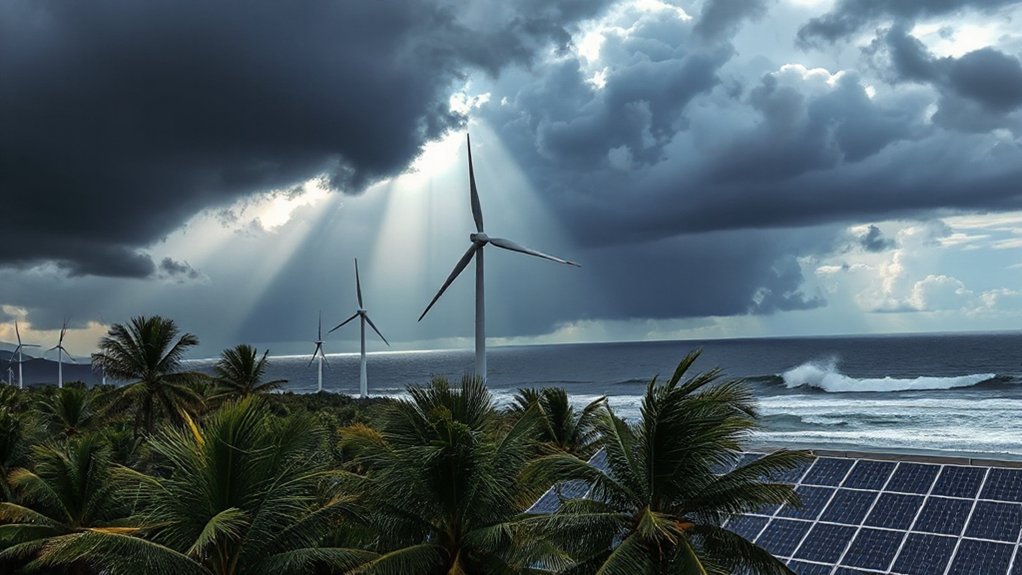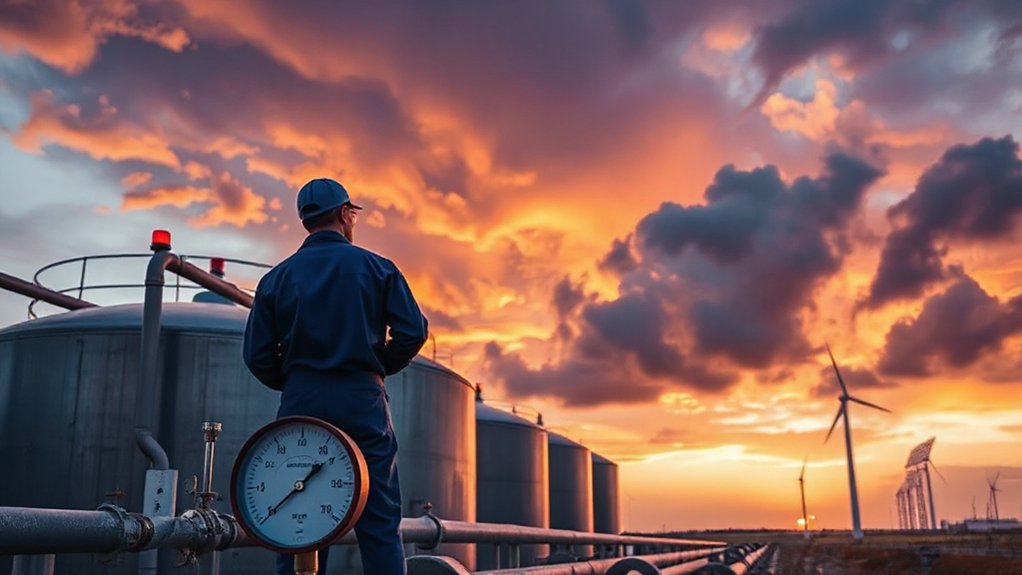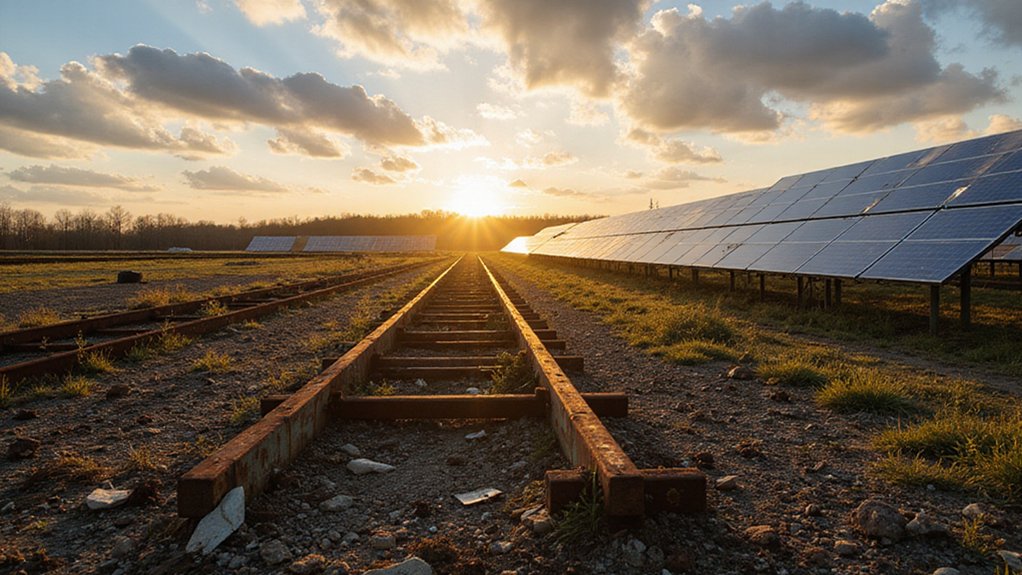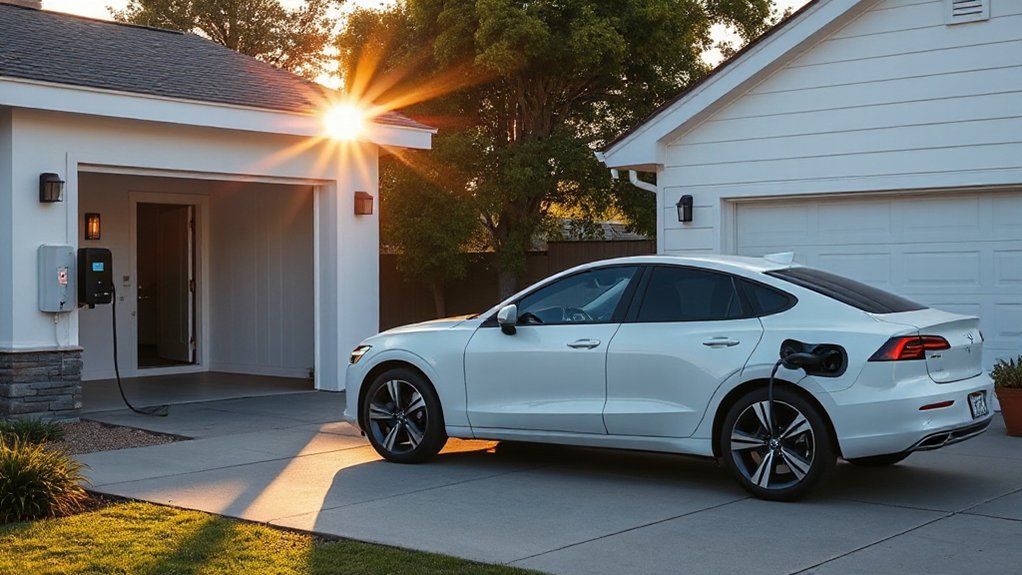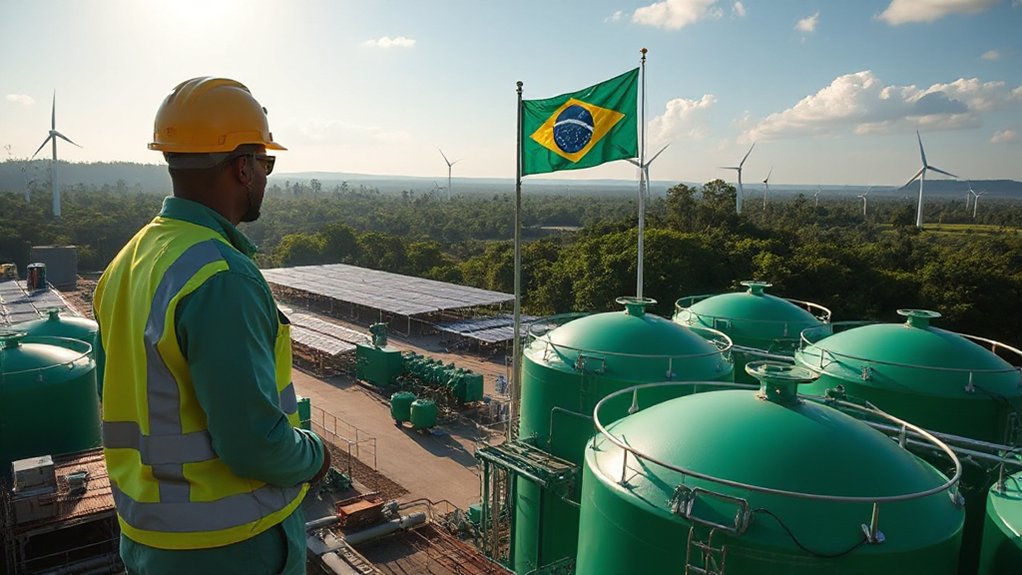While the Philippines races to boost its renewable energy capacity, catastrophic supertyphoons continue to test the resilience of its green infrastructure. The country’s installed capacity hit 8,400 MW in 2023, with ambitious plans to reach 35% renewable energy by 2030 and 50% by 2040. Sounds great on paper. Reality? That’s another story.
When supertyphoons barrel through, solar panels become expensive frisbees. Wind turbines? Giant metal pinwheels in a hurricane. The country’s 517 commercial solar projects and 291 wind installations sit directly in harm’s way. Geothermal plants, tucked safely underground, tend to fare better—nature’s little favor to the 31 geothermal projects producing nearly 2,000 MW.
Ironically, the fossil fuel alternatives aren’t exactly winning reliability contests. Eight coal plants suffered extended outages in early 2025. So much for dependable energy. When transmission lines get knocked out, those distributed solar installations suddenly look pretty smart. Recent data confirms that solar power is the cheapest electricity source in the Philippines compared to conventional fossil fuels. Despite the upfront costs, solar installations typically pay for themselves within 8.3 years through energy savings.
The Department of Energy isn’t sitting idle. The upcoming Green Energy Auction this December aims to secure 2,927 MW of new capacity, mostly solar. But adding capacity means nothing if it can’t survive the next big storm. Engineers are developing typhoon-proof mounting systems and reinforced turbine designs, but these solutions cost money. Who’s paying? That’s the million-peso question.
Microgrids offer another solution, creating islands of power when the main grid fails. Battery storage helps too, smoothing out supply when winds get too strong or clouds block the sun. Grid operators are adopting fancy technologies like STATCOM to manage voltage fluctuations. They’ll need them.
The economic math actually favors renewables in the long run. Stable electricity prices, independence from fuel imports, job creation in vulnerable communities—all good stuff. This aligns with DOE’s commitment to enhance energy security through renewable development. But first, these installations need to survive what Mother Nature throws at them. With the Philippines sitting squarely in typhoon alley, that’s no small challenge. The race is on.
References
- https://www.pvknowhow.com/news/philippines-solar-energy-stunning-2040-goal-of-50-renewable-power/
- https://about.bnef.com/insights/clean-energy/solar-shines-the-path-for-the-philippines-to-reduce-reliance-on-fossil-fuel-imports/
- https://pcij.org/2025/09/29/philippines-renewable-sector-races-to-meet-targets-as-coal-plants-linger-and-lng-grows/
- https://www.acenrenewables.com/2025/08/renewable-energy-capacity-philippines/
- https://ieefa.org/resources/clean-energy-driving-coals-decline-philippines-not-lng
- https://legacy.doe.gov.ph/renewable-energy/summary-renewable-energy-re-projects-under-re-act-2008-april-30-2025
